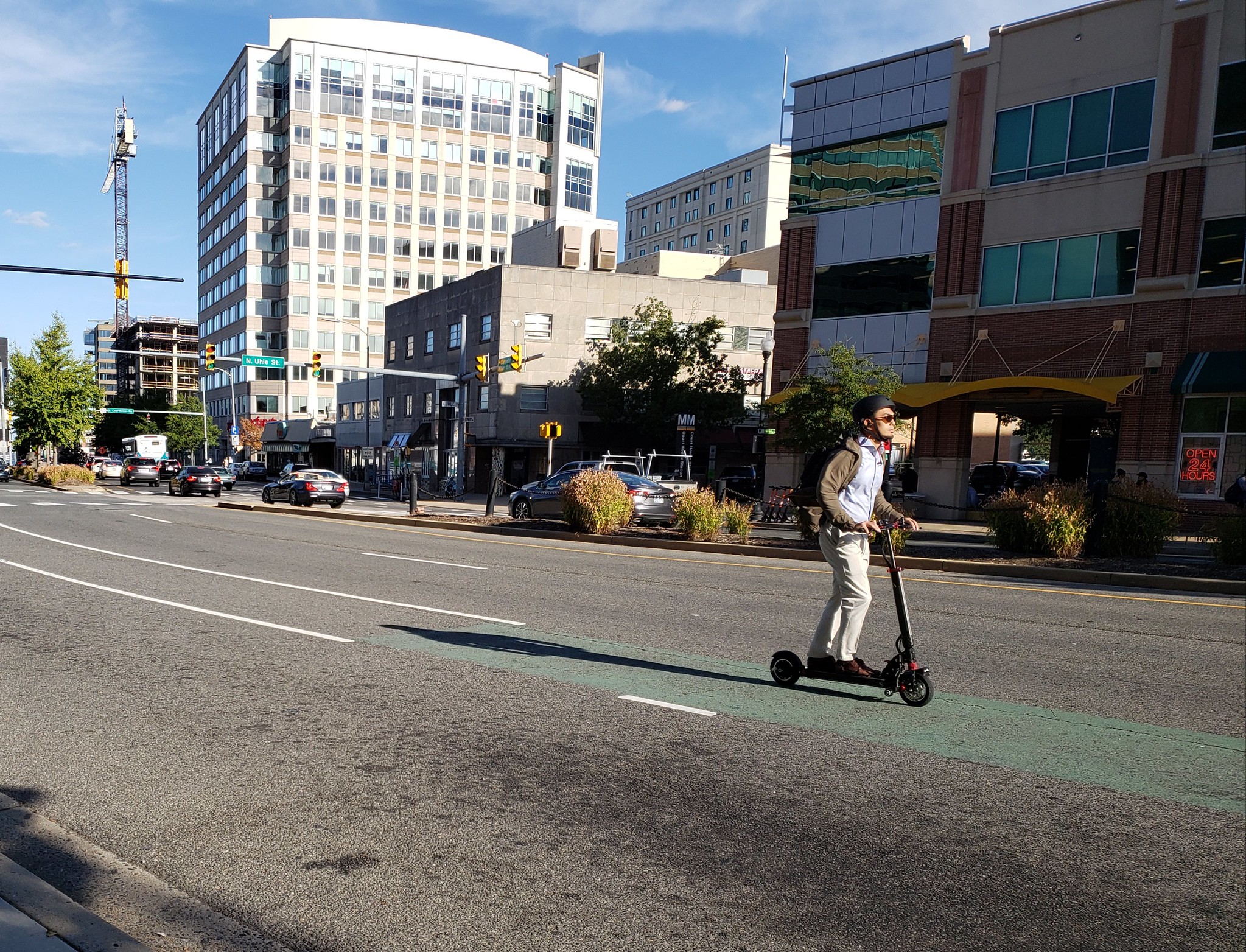When shared e-scooters first showed up in US cities several years ago, many cities considered them “toy vehicles.” After running small pilots, cities such as San Francisco and Miami quickly banned e-scooters from their streets due to complaints of illegal parking and safety concerns. But gradually, things have changed. Some cities that once banned e-scooters have now brought these lightweight, mobile devices back. And perhaps to many people’s surprise, some cities, including Denver and San Francisco, even classified e-scooters as essential businesses during COVID-19.
So why such a dramatic change of attitude toward e-scooters? The most obvious reason is that e-scooters have become extremely popular. According to the National Association of City Transportation Officials, U.S. riders took 88.5 million trips in 2019, more than double station-based bike ridership. Research suggests that most e-scooter trips are not taken for fun but for utilitarian purposes such as work and school commuting. In the past year, for those avoiding crowded spaces like buses and trains because of COVID-19, e-scooters can be a lifeline for people with few other travel options. Seizing on the opportunity for good publicity, some e-scooter companies have offered free or discounted rides for essential workers.
D.C. has been a pioneer in embracing e-scooters and e-bikes and developing regulations to make them a safe, accessible, and equitable travel option. The District started a dockless vehicle pilot program in September 2017, finding that three quarters of survey respondents agreed that the dockless program should continue. More than half of respondents wanted more vehicles than the 3200 (up to 400 vehicles by each of the eight operators) maximum DC originally allowed. A detailed data analysis of trip patterns showed that while ridership of dockless vehicles grew rapidly in the pilot phase, usage was different from the Capital Bikeshare (CaBi) system — the services were complementary, not competitive.
The popularity of e-scooters and e-bikes suggests that cities like DC should be treating dockless vehicles as an essential component of public transportation systems.
But all of this evidence is likely to leave many e-scooter critics unpersuaded. As the pandemic gradually comes to an end, the argument for e-scooters serving as a substitute for public transit is weakened. There are good reasons to worry that privately operated e-scooters — much like ridesharing companies like Uber and Lyft — could draw riders away from transit and hence threaten the recovery of public transit systems. There are also questions about whether the success of early pilot programs is scalable; as the fleet size of e-scooters increases, they can create more nuisances for pedestrians and neighborhood residents. Finally, e-scooters may pose safety risks to both their riders and other road users, especially when their speed is too high.
All these are valid concerns that cities and e-scooter operators have to address collaboratively. Cities can determine the appropriate fleet size by carefully analyzing the data provided by e-scooter companies. They can use geofencing techniques to ensure parked scooters don’t block pedestrian access. They can improve travel safety by regulating e-scooter speed, encouraging helmet use, and improving bike infrastructure. Finally, cities need to find ways to make e-scooters complement rather than compete with existing public transportation systems.
This final point means that D.C.’s Department of Transportation needs to facilitate a harmonious integration of e-scooter services with Capital Bikeshare and Metro. Here is where my own research comes in.
My colleagues and I studied e-scooter availability and usage patterns in D.C., focusing on their spatial relationships with Capital Bikeshare and Metro. On the positive side, we found that between 8 percent and 12 percent of all e-scooter trips were taken to connect with Metrorail before COVID-19. E-scooter trips made in June 2020 were longer in distance and duration than those made in June 2019, suggesting that people have substituted public transit with e-scooters for some essential trips during COVID-19.
Our analysis also revealed, however, that e-scooters may reduce ridership on Metro and CaBi. Places where e-scooters were available largely overlap with the service areas of transit and bikesharing, and more than 90% of e-scooter trips could have been made by Metro or CaBi. While these results do not necessarily mean that e-scooters have siphoned off Metro or CaBi customers (e-scooters users might be a different group of people from those riders), they do imply strong spatial competition effects between e-scooters and existing public transportation options.
Helping these travel modes to complement each other requires transportation officials to think of e-scooters not as a separate mode but as a part of the transportation ecosystem. For instance, DDOT could start by incentivizing e-scooter companies to place more vehicles in neighborhoods unserved or underserved by Metro and CaBi.
A broader strategy is to view e-scooters as an important ally in the war against car dependence. E-scooters have a great potential to replace short car trips, especially when car parking is expensive or difficult. E-scooters may also serve as a last-mile feeder to public transit, and combined e-scooter and transit use can significantly expand the geographic area that people can reach.
Cities and transit agencies could use several tools to promote combined e-scooter and transit trips. An obvious strategy is to place enough e-scooter parking spaces at transit stops —space for e-scooter charging stations would be an added bonus. Cities could also improve the bike infrastructure surrounding transit stations so that people feel safe riding e-scooters to connect with transit. Transit agencies can also work with e-scooter companies to integrate fare payment and to offer bundled pricing.
My colleague, Dr. Xilei Zhao, and I at the University of Florida are currently studying strategies to promote e-scooters as a last-mile feeder to public transit in DC. If you’d like to get involved, please consider helping this research by taking this survey.






